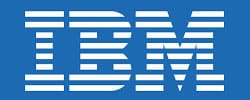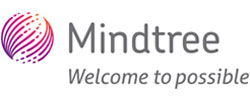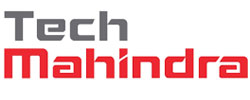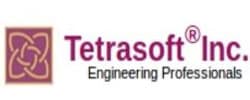Azure Data Factory
What Is Azure Data Factory ?
Azure Data Factory is a cloud service that allows you to store, manage and analyze data from your applications. The service is based on the Azure SQL Database, which is one of the most popular relational databases in the world.
Or,
Azure Data Factory is a service that can be used to create, manage and maintain data pipelines. It is a Microsoft product that provides automation for data processing workflows, Azure Data Factory is a data processing engine that can be used to create and run complex, transactional workloads.
What Is Azure Data Factory ?
Azure Data Factory is a cloud service that allows you to store, manage and analyze data from your applications. The service is based on the Azure SQL Database, which is one of the most popular relational databases in the world.
Or,
Azure Data Factory is a service that can be used to create, manage and maintain data pipelines. It is a Microsoft product that provides automation for data processing workflows, Azure Data Factory is a data processing engine that can be used to create and run complex, transactional workloads.
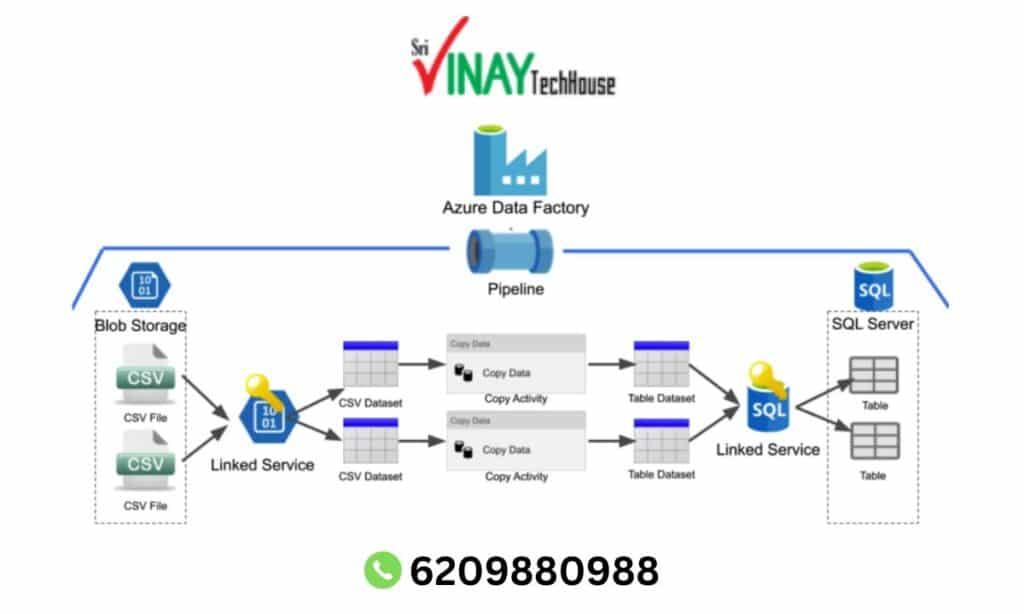
Advantages Of Azure Data Factory:
- Azure Data Factory provides an easy way to monitor and manage your data pipelines.
- In addition to SQL, Azure Data Factory supports a variety of Azure services and integrations.
- The service is compatible with many popular databases, including Azure SQL and CosmosDB.
- The service can be used to connect and manage data sources on the cloud and on premises.
- Azure Data Factory supports both batch and streaming data processes.
- It also has built-in support for SSIS, an ETL tool.
Register For Azure Data Factory Training
Benefits Of Learn Azure Data Factory:
- It Is Easy To Learn Even If You’re a Fresher.
- You Get The Job In The Software Industry In Less Than 90 Days.
- No Coding Language Required To Learn.
- You Get Decent Package
- Good Career Choice Why Because It’s Cloud Technology
Why Azure Data Factory With Vinay Tech House:-
A comprehensive training resource that includes real-time training scenarios for every area of study using the Azure Data Factory Training solutions.
* We also provide cases studies to support MSBI training.
* We plan sessions according to your preferences by highly skilled and trained experts in real-time.
* We record a session to be used for reference in the future.
* We also offer an ongoing, quick and weekend-long course to provide the online MSBI Training.
* We also offer lucrative and flexible payment plans that are flexible and profitable.






Frequently Asked Questions
What is ADF and What are it's uses?
Azure Data Factory is Azure's cloud ETL service for scale-out serverless data integration and data transformation. It offers a code-free UI for intuitive authoring and single-pane-of-glass monitoring and management. You can also lift and shift existing SSIS packages to Azure and run them with full compatibility in ADF.
Is ADF easy to learn?
Yes, Easy To Learn With In 45 Days With Us
Does ADF have a market?
100% Yes, Now ADF is booming why because it's a cloud technology so opportunities are more.
What if I miss a training session?
No need to worry, daily videos are in the class room folder and materials in the materials folder. You can watch and practice and also reach out to the trainer for queries
What type of study materials and videos we will get and how long they are available?
You will get all materials after a week of your joining which you can download and use. Daily live class recordings will be placed in a folder and you will have access for maximum 12 months. Lab practice documents and required Power BI credentials provided for practice till one year.

In-Depth Curriculum
Our educational program aims to comprehensively cover all & important points & aspects of the subject

10+ Years of Experience
We’ve come a long way teaching from hundreds to thousands, so we use our experience in guiding students in the right path
Course Specialized Trainers
Our Trainers are high experienced industry experts with their teaching methods designed for their particular course

Students Favourite
Vinay Tech House is prefered by many students as their favourite, rating as the best in teaching
Cloud Computing Concepts
- What is the "Cloud"?
- Why cloud services
- Types of cloud models
- Deployment Models
- Private Cloud deployment model
- Public Cloud deployment model
- Hybrid cloud deployment model
- Characteristics of cloud computing
- On-demand self-service
- Multi-tenancy and resource pooling
- Measured service
- Cloud Data Warehouse Architecture
- Shared Memory architecture
- Shared Disk architecture
- Shared Nothing architecture
Core Azure services
- Core Azure Architectural components
- Core Azure Services and Products
- Azure solutions
- Azure management tools
- DWH Life Cycles
- DWH Approaches (INMON and KIMBALL)
- Data Granularity, Data movement stages
Azure Pricing and Support
- Azure subscriptions
- Planning and managing costs
- Azure support options
- Azure Service Level Agreements (SLAs)
- Service Lifecycle in Azure
Azure SQL Database
- Introduction Azure SQL Database
- Comparing Single Database
- Managed Instance
- Creating and Using SQL Server
- Azure SQL Database Tools
- Migrating on premise database to SQL Azure
- Purchasing Models
- DTU service tiers
- vCore based Model
- Server-less compute tier
- Service Tiers
- General purpose / Standard
- Business Critical / Premium
- Hyperscale
- Deployment of an Azure SQL Database
- What is SQL elastic pools
- Choosing the correct pool size
- Creating a New Pool
- Manage Pools
- Monitoring and Tuning Azure SQL Database
- Configure SQL Database Auditing
- Export and Import of Database
Azure Storage Service
- Storage Service and Account
- Creating a Storage Accounte
- Standard and Premium Performance
- Understanding Replication
- Hot, Cold and Archive Access Tiers
- Working with Containers and Blobs
- Types of Blobs
- Block Blobs,
- Append Blobs
- Page Blobs
- Blob Metadata
- Soft Delete
- Azure Storage Explorer
- Access blobs securely
- Access Key
- Account Shared Access Token
- Service Shared Access Token
- Shared Access Policy
- Storage Service Encryption
- Azure Key Vault
Azure Data Factory
- What is Data Factory?
- Data Factory Key Components
- Pipelinee
- Activity
- Linked Service
- Data Set
- Integration Runtime
- Triggers
- Data Flows
- Page Blobs
- Integration Runtime Provision Required Azure Resources
- Create Resource Group
- Create Storage Account
- Provision SQL Server and Create Database
- Provision Azure Data Factory (ADF) Service
Exploration of Copy Activity
- Understanding Data Factory UI
- Copy Data from Blob Storage to SQL Database
- Copy data from storage account to storage account
- Create Linked service and Create Dataset
- Create Pipeline - Integration Service
- Copy Data from on-premise SQL Server to Blob Storage Working with Activities
- Understanding Lookup Activity
- Understanding for Each Activity
- Filter Activity
- Get Metadata Activity Azure
- Lift and Shift
- Provisioning Azure - SSIS Integration Runtime
- Execute SSIS Packages from Azure
- Execute SSIS Packages from SSISDB Triggers,
- Monitoring Pipeline
- Debug Pipeline
- Trigger pipeline manually
- Monitor pipeline
- Trigger pipeline on schedule
Scenarios and Use Cases Explanation
- ADF Introduction
- Important Concepts in ADF
- Create Azure Free Account for ADF
- Integration Runtime and Types
- Integration runtime in ADF-Azure IR
- Create Your First ADF
- Create Your First Pipeline in ADF
- Azure Storage Account Integration with ADF
- Copy multiple files from blob to blob
- Filter activity __ Dynamic Copy Activity
- Get File Names from Folder Dynamically
- Deep dive into Copy Activity in ADF
- Copy Activity Behavior in ADF
- Copy Activity Performance Tuning in ADF
- Validation in ADF
- Get Count of files from folder in ADF
- Validate copied data between source and sink in ADF
- Azure SQL Database integration with ADF
- Azure SQL Databases - Introduction Relational databases
- Creating Your First Azure SQL Database
- Deployment Models
- Purchasing Modes
- Overwrite and Append Modes in Copy Activity
- Full Load in ADF
- Copy Data from Azure SQL Database to BLOB in ADF
- Copy multiple tables in Bulk with Lookup & ForEach in Data Factory
- Logging and Notification Azure Logic Apps
- Log Pipeline Executions to SQL Table using ADF
- Custom Email Notifications Send Error notification with logic app
- Use Foreach loop activity to copy multiple Tables- Step by Step Explanation
- Incremental Load in ADF
- Incremental Load or Delta load from SQL to Blob Storage in ADF
- Multi Table Incremental Load or Delta load from SQL to Blob Storage
- Incrementally copy new and changed files based on Last Modified Date
- Azure Key Vault integration with ADFs
- Azure Key Vault, Secure secrets, keys & certificates in Azure Data
- ADF Triggers:
- Event Based Trigger in ADF
- Tumbling window trigger dependency & parameters
- Schedule Trigger
- Self-Hosted Integration Runtime
- Copying On Premise data using Azure Self Hosted integration Runtime
- Data Migration from On premise SQL Server to cloud using ADF
- Load data from on premise SQL Server to Azure SQL DB
- Data Migration with polybase and Bulk insert
- Copy Data from SQL Server to Azure SQL DW with polybase & Bulk Insert
- Data Migration from On premise File System to cloud using ADF
- Copy Data from on-premise File System to ADLS Gen2
- ToCopying data from REST API using ADF
- Loop through REST API copy data TO ADLS Gen2-Linked Service Parameters
- AWS S3 integration with ADF
- Migrate Data from AWS S3 Buckets to ADLS Gen2
- Activities in ADF
- Switch Activity-Move and delete data
- Until Activity-Parameters & Variables
- Copy Recent Files From Blob input to Blob Output folder without LPV
- Snowflake integration with ADF
- Copy data from Snowflake to ADLS Gen2
- Copy data from ADLS Gen2 to Snowflake
- Azure CosmosDB integration with ADF
- Copy data from Azure SQLDB to CosmosDB
- Copy data from blob to CosmosDB
- Advanced Concepts in ADF
- Nested ForEach -pass parameters from Master to child pipeline
- High Availability of Self Hosted IR &Sharing IR with other ADF
- Data Flows Introduction
- Azure Data Flows Introduction
- Setup Integration Runtime for Data Flows
- Basics of SQL Joins for Azure Data Flows
- Joins in Data Flows
- Aggregations and Derive Column Transformations
- Joins in Azure Data Flows
- Advanced Join Transformations with filter and Conditional Split
- Data Flows - Data processing use case1
- Restart data processing from failure
- Remove Duplicate Rows &Store Summary Credit Stats
- Difference Between Join vs. Lookup Transformation& Merge Functionality
- Dimensions in Data Flows
- Slowly Changing Dimension Type1 (SCD1) with HashKey Function
- Flatten Transformation
- Rank, Dense_Rank Transformatioss
- Data Flows Performance Metrics and Data Flow Parameters
- How to use pivot and unpivot Transformations
- Data Quality Checks and Logging using Data Flows
- Batch Account Integration with ADF
- Custom Activity in ADF
- Azure Functions Integration with ADFF
- Azure Databricks Integration with ADF
- ADF Integration with Azure Databricks
- Azure Data Lake Analytics integration with ADF
Introduction to Azure Databricks
- Introduction to Databricks
- Azure Databricks Architecture
- Azure Databricks Main Concepts
- Databricks Integration with Azure Blob Storage (Read data from Blob Storage and Create Blob mount point)
Introduction to Python
- Features of Python
- Python Virtual Machine (PVM)
- Frozen Binaries
- Memory management in Python
- Garbage collection in Python
How long does it take to learn Azure data Factory?
The time it takes to learn Azure Data Factory (ADF) depends on various factors, such as your background, experience, and learning style. For someone who is already familiar with data integration and management, or with similar tools, it may take a few days to a few weeks to get familiar with Azure Data Factory. For someone who is new to the field, it may take several weeks to several months to get a good understanding of the tool.
Azure Data Factory is a cloud-based data integration and management platform, and its user interface is designed to be intuitive and user-friendly. However, to become proficient with the tool, it is recommended to take an Azure Data Factory training course, enroll in a certification program, or work with a mentor to receive hands-on training and guidance.
In conclusion, the time it takes to learn Azure Data Factory will vary depending on the individual and their learning style, but with the right resources and support, it is possible to become proficient with the tool in a relatively short period of time.
How do I start learning Azure data Factory?
Here are some steps to start learning Azure Data Factory:
Familiarize yourself with the basics of cloud computing and data integration. This will give you a foundation to build upon as you start learning Azure Data Factory.
Read the official documentation and tutorials provided by Microsoft. This will give you an overview of the features and capabilities of Azure Data Factory, as well as its architecture and components.
Enroll in a structured training program, such as an online course or in-person class, to learn Azure Data Factory in a more comprehensive manner.
Practice using the tool by following along with tutorials and exercises, and by working on real-world projects. This will help you to gain hands-on experience and build your confidence with the tool.
Get involved in the Azure Data Factory community, such as online forums and discussion groups, to connect with other users, ask questions, and share your experiences.
Consider obtaining certification in Azure Data Factory, which will demonstrate your expertise and can enhance your career prospects.
Overall, starting with the basics and building upon that foundation, learning from structured training programs, and practicing and networking with others, are all important steps in learning Azure Data Factory.
Is Azure data Factory in demand?
Yes, Azure Data Factory (ADF) is in demand. As businesses continue to adopt cloud computing and look for efficient and scalable solutions for their data integration and management needs, demand for Azure Data Factory is growing.
ADF is a cloud-based data integration and management platform that enables organizations to efficiently process and manage large amounts of data from various sources. It supports data integration scenarios such as data transfer, data transformation, and data orchestration.
The demand for ADF is driven by several factors, including the growth of big data, the need for real-time data insights, and the trend towards digital transformation. ADF provides a flexible and scalable solution that can meet the growing data management needs of organizations of all sizes, across a variety of industries.
In conclusion, Azure Data Factory is a highly sought after skill, and those who are familiar with the tool are in demand. If you have an interest in cloud computing and data integration, then learning ADF can be a great way to advance your career and open up new opportunities.
How to practice Azure data Factory for free?
Set up a free Azure account: If you don't already have an Azure account, you can sign up for a free account and get access to a limited number of Azure services, including Azure Data Factory, for free.
Use sample data and tutorials: There are many free sample data sets and tutorials available online that you can use to practice using Azure Data Factory. Microsoft provides several tutorials and exercises as part of its Azure Data Factory documentation that you can follow along with.
Join online communities: There are many online communities, such as forums, discussion groups, and social media groups, where you can connect with other users and ask questions about Azure Data Factory.
Participate in free training programs: Some training providers offer free training programs and workshops that can help you learn Azure Data Factory.
By taking advantage of these free resources, you can gain hands-on experience with Azure Data Factory and build your skills and confidence with the tool.
What are the benefits of using Azure Data Factory?
Some of the benefits of using Azure Data Factory include its scalability, reliability, and ease of use, as well as its ability to integrate data from a wide range of sources, including on-premises, cloud, and big data systems.
How does Azure Data Factory differ from other data integration tools?
Azure Data Factory is a cloud-based platform, which makes it more scalable and flexible than many traditional on-premises data integration tools. Additionally, it offers a wide range of data integration capabilities, including data transfer, data transformation, and data orchestration, making it a more comprehensive solution compared to some other data integration tools.
What kind of data sources does Azure Data Factory support?
Azure Data Factory supports a wide range of data sources, including on-premises databases and file systems, cloud data stores, such as Azure Blob Storage and Azure SQL Database, and big data sources, such as Hadoop and Apache Spark.
How do I get started with Azure Data Factory?
To get started with Azure Data Factory, you can sign up for a free Azure account and start using the tool. You can also enroll in a structured training program, such as an online course or in-person class, to learn Azure Data Factory in a more comprehensive manner.
Is Azure Data Factory easy to learn?
The learning curve for Azure Data Factory will depend on your prior experience with cloud computing and data integration. However, Microsoft provides a wealth of documentation and tutorials to help you get started, and many training providers offer structured training programs to help you learn the tool.
How much does it cost to use Azure Data Factory?
The cost of using Azure Data Factory will depend on the specific usage scenarios and the amount of data processed. Microsoft provides a pricing calculator to help you estimate the cost of using the tool.
Banking Project
We Do Cover Microsoft Azure Project In Our Training That Helps You Give Real Time Experience.
Telecommunications project
This project helps you get real-time experience into the Azure workflow
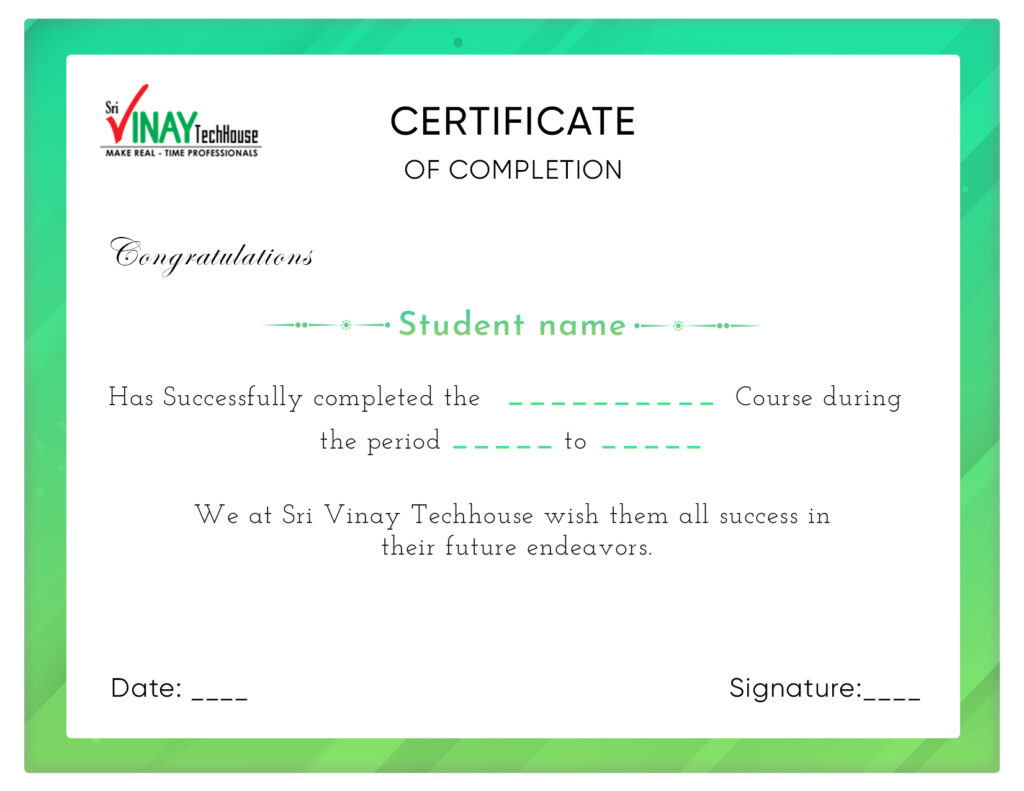
Vinay Tech’s course completion certificate will be provided upon the completion of the course successfully. It increases the value of your resume and you can attain leading job posts with the help of this certification in leading MNCs. The certificate can be printed out like a hard copy or handed digitally.
Our Student Say!
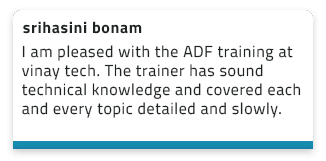
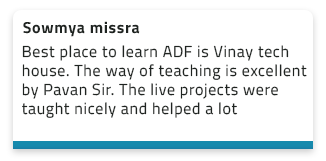

Our Learners Work At



